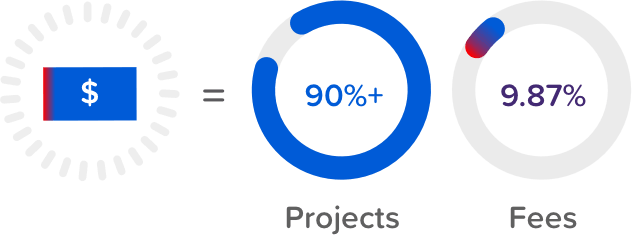The Cool Effect Model

“We created our Model to bring integrity to the voluntary carbon market. It is essential if we are to achieve the success we seek and the planet requires.”
– Dee Lawrence, Co-Founder
- Listed on international standards with secure registries
- Voluntary Carbon Market
- 100% additional
- Secondary development and social benefits beyond carbon
- Committed to reducing carbon emissions and to the activities of the project.
- Revenue from the sale of carbon credits is directed to improving the project
- Track record of regular involvement and participation in the project
- Demonstrate contributions to United Nations Sustainability Development Goals (UNSDGs)
- Endorsed by the local community
- Committed to long-term quality
- Financially sustainable
- Committed to long-term crediting
Completion of Cool Effect due diligence process
Site Visits- Determine the accuracy of project documentation
- Understand the impact on a local level
- Additionality
- Baseline
- Leakage
- Emission reduction claims
- Both buyer and the developer know the price
- Our fees are always fixed and fully disclosed
No hidden fees or undisclosed markups
In some instances, Cool Effect invests capital to help a project grow in exchange for future credits and those credits will be sold at market price
Cool Effect is a registered 501(c)3
Founders bring 14 years’ experience as developers, buyers and climate philanthropists
Non-profit status enhances integrity
Genuine partnership with clients and projects- Not simply transactional
- Number of clients limited to ensure quality
- Buyers at all levels benefit from negotiated prices that are based on higher volume purchases from our collective community
- Tools to communicate internally and externally
- Regular reporting on project details
- Simple technology solutions
- Employee programs
90%+ Directly to Projects


More than 90% of each dollar you donate goes directly to helping our projects, with a small fee of only 9.87% to help us cover payment processing, research, and possible registration fees.
Here’s a breakdown:
- 1.5% Research Fee
- 2–4% Payment Processing Fee
- Registry Fee (where applicable)
- Remainder for Cool Effect Administration Fee
Our Process
Our range of global projects are carefully selected, meticulously analyzed, and scientifically verified to reduce carbon emissions.
Discover
Our voluntary carbon market experts scour the globe to find the best projects that measurably reduce greenhouse gases. Working closely with project developers, we are able to ensure that each program is stable, sound, and capable of doing good for both people and the planet.
Authenticate
With a rigorous verification process, our voluntary carbon market experts ensure that projects are legitimately reducing carbon emissions. We confirm the science and financials, making sure each project meets the toughest requirements of the world’s major carbon standards (including the United Nations).
Select
We carefully choose the best of the best, providing greater certainty and traceability for the projects in our community. Our selection process ensures tangible emission reductions and confidence in knowing that 90% of each contribution goes directly to the projects.
What This Means
Our strict evaluation process means you get a better, more sustainable way to make an impact. We hold nothing back, sharing our views, expertise, and vital stats on each project, all so you can get a clearer picture of how you’re helping reduce carbon emissions.